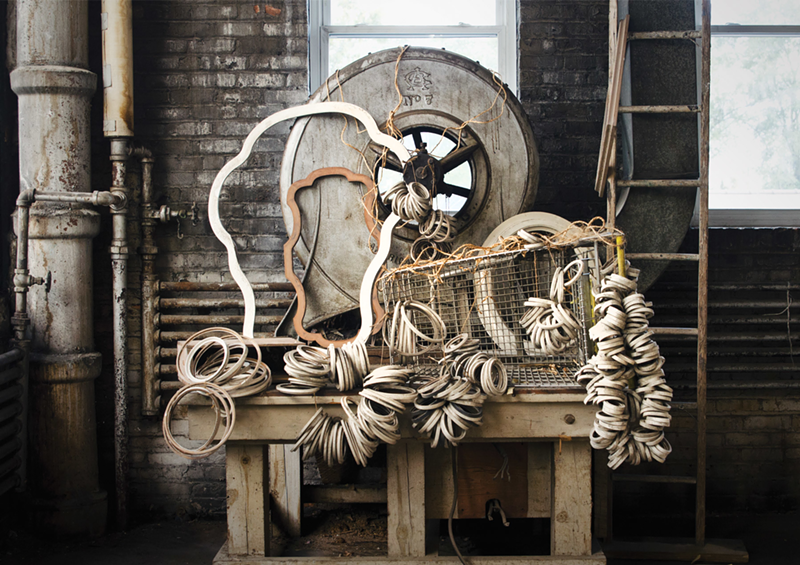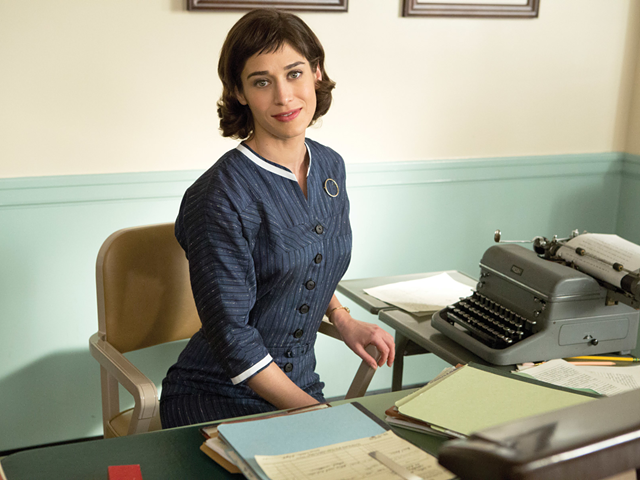It’s a shopping experience that will leave you with a trunkload of antique décor, a minor dent in your wallet and a lot of dust on your hands. Since August of this year, Janet Baltzersen and her team of friends and family have been holding monthly open houses to showcase and sell a staggering number of antique picture frames left behind in a former Castner Picture Frame Company warehouse in Over-the-Rhine. Tim Haines, president of corporate moving company Relocation Strategies, purchased the building in spring of 2012 and he enlisted the help of Baltzersen, a close friend, to spearhead the sell-off of the frame surplus.
“I knew that the frame factory had been here for quite some time,” Haines says, “and that there was a likelihood of much of the raw stock to be left behind.”
That “raw stock” manifested itself in the form of more than 100,000 frames, most of which date back to the 1920s and 1930s. And Haines, who had purchased the warehouse to relocate his own company office, was suddenly met with the challenge of clearing the floor-to-ceiling leftover stock.
The Castner Picture Frame Company was established in 1887 in Williamsport, Penn. In 1943, Peter Radin purchased the company and moved it to Cincinnati, where he continued to work until his death in 2001. Radin’s daughter Carol briefly continued the business, but interest in these styles of frames was dwindling. The company shut down, leaving behind an immense amount of uniquely designed inventory.
For more than a century, Castner frames were produced meticulously from scratch. Straight-grained lumber was kiln-dried and sawed into the double frame style Castner is known for. Frames then received finishing treatments such as antique metal leaf and, for more expensive frames, hand-mounted ornaments and gold leaf. Currently the OTR warehouse is home to a variety of shapes, sizes and finishes, including small ovals, large rustic circles, gesso and antique gold finishes.
The shopping experience is as unique as the products on the shelves. Customers make their way up the warehouse stairs and are greeted by Baltzersen and her team, who liberally distribute gloves and masks to combat the layers of dust customers encounter while searching for the perfect size and shape frame. Customers are also treated to light refreshments, including a choice of wine to “help you shop,” according to one assistant. Once you’ve selected your pieces, Baltzersen’s army of friends and family wipe down your frames, efficiently pack them up and help you load them into your car — it’s rare that anybody leaves with few enough to carry alone.
The project has seen tremendous progress so far.
“At first we just wanted to see if people were even interested in the frames,” Baltzersen says. “I took a sample group to Burlington and Lawrenceburg antique shows. I was blown away by the response. People were fascinated with the history of the frames and the warehouse they came from. You just can’t buy frames like this anymore.”
The warehouse has been frequented by representatives from Country Living magazine, as well as customers who have put the frames to creative use.
“I’m amazed at what people are doing with these frames,” Baltzersen says. “Artists and photographers are purchasing them and using them as is, or putting their own finishes on them to frame their work. People are making chalkboards, corkboards, putting in chicken wire to hang jewelry, mirrors and glass for photos. Some people are just hanging a collection of blank frames on a wall. They are that beautiful on their own.”
But despite making a significant dent in the stock, the project still has a long way to go. Baltzersen’s crew admits that even with more than 2,000 frames sold, the warehouse looks virtually the same as it did in August, and storing or discarding the frames is not an option.
Baltzersen explains, “We want to sell the frames to people who appreciate the history, the craftsmanship that went into producing them, and have intentions to use them and repurpose them as they were intended. We want to do right by the families who started this business, and the workers who so lovingly created them in the past. Throwing them away or storing them to be forgotten would be a terrible waste. Beautiful things should never be discarded.”
The next CASTNER PICTURE FRAME COMPANY open house will take place 11 a.m.-2 p.m. Sunday, Nov. 24. The warehouse is located in the Mohawk Building, 2145 Central Parkway, Over-the-Rhine. Cash, checks and credit cards all accepted. Street parking available.






